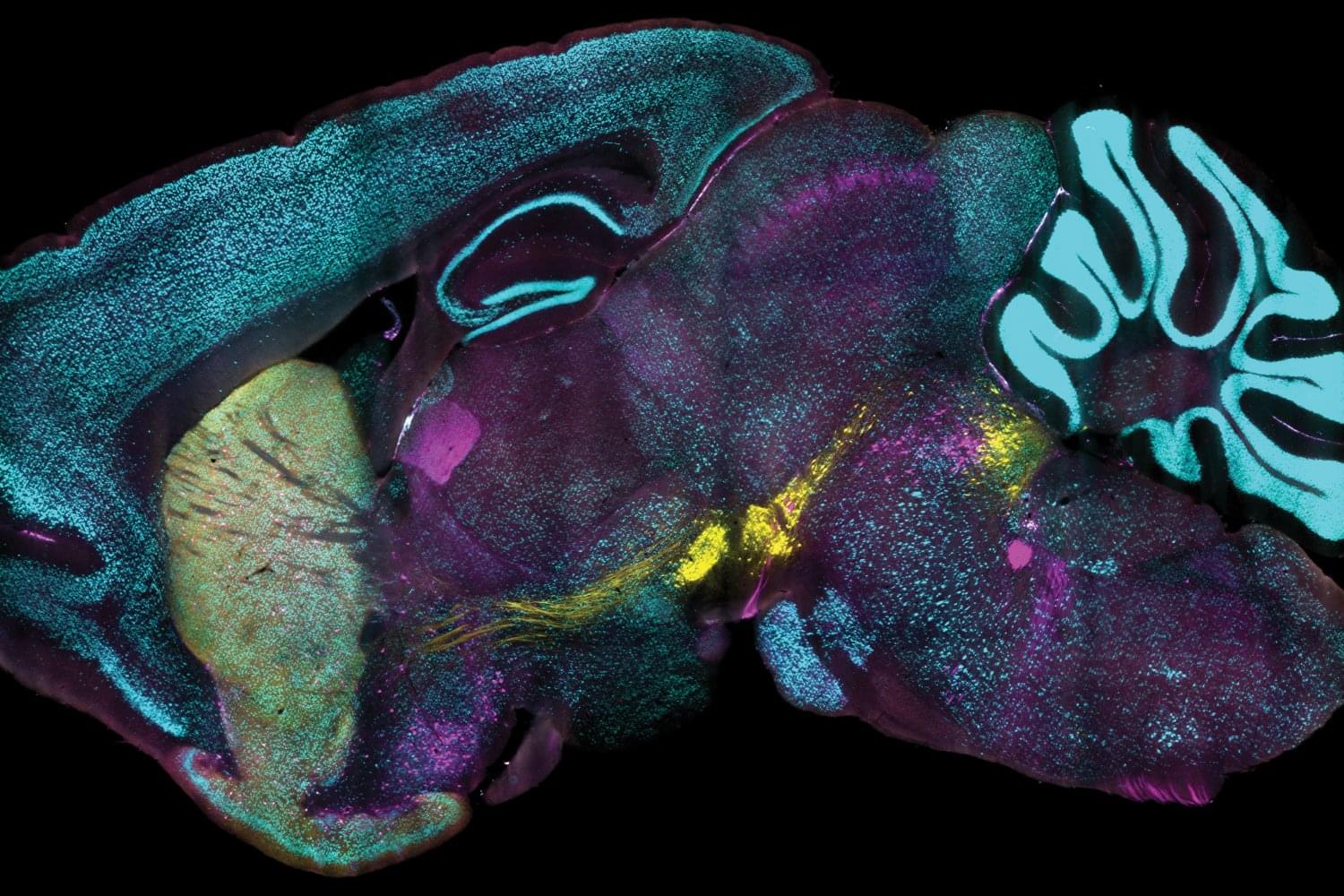In an astounding breakthrough, scientists have discovered a molecular ‘switch’ that can revert cancer cells back into healthy cells. It could lead to far l.


Cellular organization is central to tissue function and homeostasis, influencing development, disease progression, and therapeutic outcomes. The emergence of spatial omics technologies, including spatial transcriptomics and proteomics, has enabled the integration of molecular and histological features within tissues. Analyzing these multimodal data presents unique challenges, including variable resolutions, imperfect tissue alignment, and limited or variable spatial coverage. To address these issues, we introduce CORAL, a probabilistic deep generative model that leverages graph attention mechanisms to learn expressive, integrated representations of multimodal spatial omics data. CORAL deconvolves low-resolution spatial data into high-resolution single-cell profiles and detects functional spatial domains. It also characterizes cell-cell interactions and elucidates disease-relevant spatial features. Validated on synthetic data and experimental datasets, including Stero-CITE-seq data from mouse thymus, and paired CODEX and Visium data from hepatocellular carcinoma, CORAL demonstrates robustness and versatility. In hepatocellular carcinoma, CORAL uncovered key immune cell subsets that drive the failure of response to immunotherapy, highlighting its potential to advance spatial single-cell analyses and accelerate translational research.
The authors have declared no competing interest.

A new technology developed at MIT enables scientists to label proteins across millions of individual cells in fully intact 3D tissues with unprecedented speed, uniformity, and versatility. Using the technology, the team was able to richly label large tissue samples in a single day. In their new study in Nature Biotechnology, they also demonstrate that the ability to label proteins with antibodies at the single-cell level across large tissue samples can reveal insights left hidden by other widely used labeling methods.
Profiling the proteins that cells are making is a staple of studies in biology, neuroscience, and related fields because the proteins a cell is expressing at a given moment can reflect the functions the cell is trying to perform or its response to its circumstances, such as disease or treatment. As much as microscopy and labeling technologies have advanced, enabling innumerable discoveries, scientists have still lacked a reliable and practical way of tracking protein expression at the level of millions of densely packed individual cells in whole, 3D intact tissues. Often confined to thin tissue sections under slides, scientists therefore haven’t had tools to thoroughly appreciate cellular protein expression in the whole, connected systems in which it occurs.
“Conventionally, investigating the molecules within cells requires dissociating tissue into single cells or slicing it into thin sections, as light and chemicals required for analysis cannot penetrate deep into tissues. Our lab developed technologies such as CLARITY and SHIELD, which enable investigation of whole organs by rendering them transparent, but we now needed a way to chemically label whole organs to gain useful scientific insights,” says study senior author Kwanghun Chung, associate professor in The Picower Institute for Learning and Memory, the departments of Chemical Engineering and Brain and Cognitive Sciences, and the Institute for Medical Engineering and Science at MIT. “If cells within a tissue are not uniformly processed, they cannot be quantitatively compared. In conventional protein labeling, it can take weeks for these molecules to diffuse into intact organs, making uniform chemical processing of organ-scale tissues virtually impossible and extremely slow.”

Y ou could be forgiven for thinking that the turn of the millennium was a golden age for the life sciences. After the halcyon days of the 1950s and ’60s when the structure of DNA, the true nature of genes and the genetic code itself were discovered, the Human Genome Project, launched in 1990 and culminating with a preliminary announcement of the entire genome sequence in 2000, looked like – and was presented as – a comparably dramatic leap forward in our understanding of the basis of life itself. As Bill Clinton put it when the draft sequence was unveiled: ‘Today we are learning the language in which God created life.’ Portentous stuff.
The genome sequence reveals the order in which the chemical building blocks (of which there are four distinct types) that make up our DNA are arranged along the molecule’s double-helical strands. Our genomes each have around 3 billion of these ‘letters’; reading them all is a tremendous challenge, but the Human Genome Project (HGP) transformed genome sequencing within the space of a couple of decades from a very slow and expensive procedure into something you can get done by mail order for the price of a meal for two.
Since that first sequence was unveiled in 2000, hundreds of thousands of human genomes have now been decoded, giving an indication of the person-to-person variation in sequence. This information has provided a vital resource for biomedicine, enabling us, for example, to identify which parts of the genome correlate with which diseases and traits. And all that investment in gene-sequencing technology was more than justified merely by its use for studying and tracking the SARS-CoV-2 virus during the COVID-19 pandemic.

Here we report on the collaboration of Open AI and Retro Biotech using GPT-4b to investigate ways to improve the efficacy of the Yamanaka factors in reprogramming cells.
Some links are affiliate links so we will earn a commission when they are used to purchase products.
If you would like to support our channel please consider joining our patreon / modernhealthspan.
Stemregen 15% discount Code MODERN https://tinyurl.com/45z968yr (Only available in the US)
DoNotAge 10% discount code MHS https://tinyurl.com/6dbvhv87
Creatine http://tinyurl.com/m6jc9auf CoQ10 https://tinyurl.com/4tpjxw7r.
Renue By Science 10% discount code MHS: https://tinyurl.com/37ahmr7d.
Skin & Body Essentials https://tinyurl.com/536zvrcr.
Wellness Extract 10% discount Code MODERNWE Geranylgeraniol Essential http://wellnessextract.com/RICHARDWE Delta Gold Vit E
ProHealth 15% discount code: MODERN NMNH 125mg https://prohealth.pxf.io/kOaR53
NOVOS Core $5 discount CODE 5OFFMHS24 https://novos.sjv.io/daqJ0Q
n1o1 Nitric Oxide 10% discount with code Modern https://tinyurl.com/3esakm4s.
n1o1 Nitric Oxide Lozenges https://tinyurl.com/yh4rrtht.
Age-Defiance Face Cream https://tinyurl.com/4zr959zh.
Pendulum 20% Discount Code HEALTHSPAN Akkermansia pendulumtherapeutics.sjv.io/baoQVg.
Metabolic Daily https://pendulumtherapeutics.sjv.io/N… 5% discount Code MODERN https://omegaquant.com/shop/ Bulletproof 15% off with coupon code: HEALTHSPAN15: https://tinyurl.com/4npjk5vp Inner Fuel Gut support https://bulletproof.fdf2.net/PyDKDM Omega-3 Krill Oil https://bulletproof.fdf2.net/xkdxmy Nuchido Time+ 20% discount of first purchase with code MODERN20 https://nuchido.com/MODERN OneSkin 15% Discount: Code MODERN https://tinyurl.com/3t6tevj8 OS-01 Face Topical Supplement https://tinyurl.com/29c8wrr2 ☕If you would like to support our channel, we’d love a coffee…thank you! https://www.buymeacoffee.com/mhealthspan 🌐Links in this video MIT Report https://www.technologyreview.com/2025… *************************************** Health claims Disclosure: Information provided on this video is not a substitute for direct, individual medical treatment or advice. Please consult with your doctor first. Products or services mentioned in this video are not a recommendation. Audio Copyright Disclaimer Please note that we have full authorization to the music that we used in our videos as they were created using the service WeVideo which provides the rights to the music. The rights are detailed in the terms of use that can be reviewed here https://www.wevideo.com/terms-of-use and any following inquiries should be addressed to [email protected]. ********************************************** #stemcells #ai #rejuvenation.
OmegaQuant 5% discount Code MODERN https://omegaquant.com/shop/
Bulletproof 15% off with coupon code: HEALTHSPAN15: https://tinyurl.com/4npjk5vp.
Inner Fuel Gut support https://bulletproof.fdf2.net/PyDKDM
Omega-3 Krill Oil https://bulletproof.fdf2.net/xkdxmy.
Nuchido Time+ 20% discount of first purchase with code MODERN20 https://nuchido.com/MODERN
OneSkin 15% Discount: Code MODERN https://tinyurl.com/3t6tevj8 OS-01 Face Topical Supplement https://tinyurl.com/29c8wrr2
☕If you would like to support our channel, we’d love a coffee…thank you! https://www.buymeacoffee.com/mhealthspan.
🌐Links in this video.
MIT Report https://www.technologyreview.com/2025…
*******************************
Health claims Disclosure: Information provided on this video is not a substitute for direct, individual medical treatment or advice. Please consult with your doctor first. Products or services mentioned in this video are not a recommendation.
Audio Copyright Disclaimer.
Please note that we have full authorization to the music that we used in our videos as they were created using the service WeVideo which provides the rights to the music. The rights are detailed in the terms of use that can be reviewed here https://www.wevideo.com/terms-of-use and any following inquiries should be addressed to [email protected].
**************************************
Environmental Gerontology & Vulnerability Science For Health And Well-Being — Dr. Amir Baniassadi, Ph.D. — Marcus Institute for Aging Research, Hebrew SeniorLife / Harvard Medical School.
Dr. Amir Baniassadi, Ph.D. is an Instructor of Medicine at Harvard Medical School and an Assistant Scientist in Marcus Institute for Aging Research (https://www.marcusinstituteforaging.o… where he works on environmental impacts on health and well-being of older populations.
Dr. Baniassadi works on the impacts of ambient air temperature and air quality (both indoors and outdoors) on outcomes related to the health and well-being of physiologically and socioeconomically vulnerable populations. His research applies novel environmental modeling and measurement techniques along with remote and long-term physiological and functional monitoring of individuals to establish relationships between exposure and outcome variables of interest outside clinical lab settings. The ultimate goal of his research is to develop environmental interventions that optimize the environment for health and longevity of older adults.
Dr. Baniassadi has a Ph.D. in Civil, Environmental, and Sustainable Engineering from Arizona State University and a B.Sc. degree in Mechanical Engineering from the University of Tehran. His post-doctoral training includes a three-year T32 fellowship in Translational Research in Older adults, and a two-year postdoctoral fellowship at Harvard University Graduate School of Design.
#AmirBaniassadi #HarvardMedicalSchool #MarcusInstituteForAgingResearch #EnvironmentalGerontology #VulnerabilityScience #Exposome #Health #WellBeing #Wearables #SmartHome #AgingInPlace #Thermoregulation #HeatIslands.


Evan groover2024 NAPB borlaug scholargrad student — plant and microbial biology, UC berkeley.